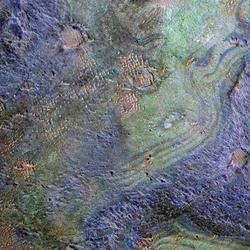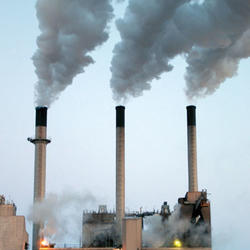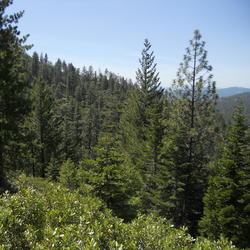A short video on how carbon can get into the atmosphere.
How does carbon get into the atmosphere?
Atmospheric carbon dioxide comes from two primary sources—natural and human activities. Natural sources of carbon dioxide include most animals, which exhale carbon dioxide as a waste product. Human activities that lead to carbon dioxide emissions come primarily from energy production, including burning coal, oil, or natural gas.
Learn more: Sources of Greenhouse Gas Emissions (EPA)
Related
What is carbon sequestration?
What’s the difference between geologic and biologic carbon sequestration?
How much carbon dioxide can the United States store via geologic sequestration?
Which area is the best for geologic carbon sequestration?
How much carbon dioxide does the United States and the World emit each year from energy sources?
Has the USGS made any Biologic Carbon Sequestration assessments?
A short video on how carbon can get into the atmosphere.
 PubTalk 1/2011 — Capture and Geologic Sequestration of Carbon Dioxide
PubTalk 1/2011 — Capture and Geologic Sequestration of Carbon Dioxide
Is Sequestration Necessary? Can We Do It at an Acceptable Total Cost?
By Yousif Kharaka, USGS National Research Program
Is Sequestration Necessary? Can We Do It at an Acceptable Total Cost?
By Yousif Kharaka, USGS National Research Program
Melt water stream discharging from Gulkana Glacier, Alaska.
USGS research of the Yukon River has had a long term goal of determining the source and fate of organic carbon transported by the river to the Bering Sea and ultimately the Arctic Ocean.
Melt water stream discharging from Gulkana Glacier, Alaska.
USGS research of the Yukon River has had a long term goal of determining the source and fate of organic carbon transported by the river to the Bering Sea and ultimately the Arctic Ocean.
- Studying Arctic Changes during the International Polar Year
- Why soils aren't just for growing crops
- What does carbon have to do with global weather and climate?
- Balancing tradeoffs between the carbon cycle, econoic concerns, and the environment
- Making choices-- from household decisions to national policies
- Studying Arctic Changes during the International Polar Year
- Why soils aren't just for growing crops
- What does carbon have to do with global weather and climate?
- Balancing tradeoffs between the carbon cycle, econoic concerns, and the environment
- Making choices-- from household decisions to national policies
Davis Rd. carbon dioxide vent, Salton Sea, California.
Davis Rd. carbon dioxide vent, Salton Sea, California.
A carbon balance model for the great dismal swamp ecosystem
A spatial modeling framework to evaluate domestic biofuel-induced potential land use changed and emissions
A multiscale and multidisciplinary investigation of ecosystem-atmosphere CO2 exchange over the rocky mountains of colorado
Related
What is carbon sequestration?
What’s the difference between geologic and biologic carbon sequestration?
How much carbon dioxide can the United States store via geologic sequestration?
Which area is the best for geologic carbon sequestration?
How much carbon dioxide does the United States and the World emit each year from energy sources?
Has the USGS made any Biologic Carbon Sequestration assessments?
A short video on how carbon can get into the atmosphere.
A short video on how carbon can get into the atmosphere.
 PubTalk 1/2011 — Capture and Geologic Sequestration of Carbon Dioxide
PubTalk 1/2011 — Capture and Geologic Sequestration of Carbon Dioxide
Is Sequestration Necessary? Can We Do It at an Acceptable Total Cost?
By Yousif Kharaka, USGS National Research Program
Is Sequestration Necessary? Can We Do It at an Acceptable Total Cost?
By Yousif Kharaka, USGS National Research Program
Melt water stream discharging from Gulkana Glacier, Alaska.
USGS research of the Yukon River has had a long term goal of determining the source and fate of organic carbon transported by the river to the Bering Sea and ultimately the Arctic Ocean.
Melt water stream discharging from Gulkana Glacier, Alaska.
USGS research of the Yukon River has had a long term goal of determining the source and fate of organic carbon transported by the river to the Bering Sea and ultimately the Arctic Ocean.
- Studying Arctic Changes during the International Polar Year
- Why soils aren't just for growing crops
- What does carbon have to do with global weather and climate?
- Balancing tradeoffs between the carbon cycle, econoic concerns, and the environment
- Making choices-- from household decisions to national policies
- Studying Arctic Changes during the International Polar Year
- Why soils aren't just for growing crops
- What does carbon have to do with global weather and climate?
- Balancing tradeoffs between the carbon cycle, econoic concerns, and the environment
- Making choices-- from household decisions to national policies
Davis Rd. carbon dioxide vent, Salton Sea, California.
Davis Rd. carbon dioxide vent, Salton Sea, California.











